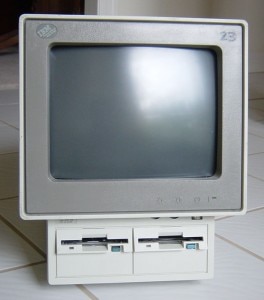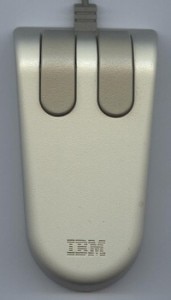 The PS/2 lineup of computers, introduced in 1987, was an effort by IBM to take back the initiative in the PC market. With PS/2 came new technology and a refreshed look, which IBM thought would help it claw back market share from clone manufacturers.
The PS/2 lineup of computers, introduced in 1987, was an effort by IBM to take back the initiative in the PC market. With PS/2 came new technology and a refreshed look, which IBM thought would help it claw back market share from clone manufacturers.
But instead of re-establishing IBM’s dominance over the PC market, the PS/2 ended up being one of the big failures in tech history, as well as the beginning of the end for IBM’s PC business.
Putting personal back in IBM PC

When IBM introduced the first PC in 1981, it quickly came under attack from clone manufacturers, such as Compaq. Since it was made out of standard components, with only the BIOS and BASIC being proprietary to IBM, the PC was ripe for copying and mass manufacturing.
After Phoenix reverse-engineered IBM’s BIOS, there was little to stop anyone making a PC that worked exactly like, or even better than, the real thing.
Then April 2, 1987, IBM introduced its third generation of personal computers, the PS/2. IBM had been losing market share to clone-manufacturers, and introduced the PS/2 with a proprietary bus architecture – Micro Channel Architecture (MCA) – in an attempt to stem the tide of increasing competition.
In June 1987, IBM said it was manufacturing almost 4,000 units of PS/2 computers every day. The company expected the PS/2 range of PCs to rack up sales of $22 billion in 1988.
At launch, you had three models to choose from, ranging from $1,695 to $10,995. In today’s prices, adjusted for inflation, that’s $3,400 to $22,000.
If you paid the top price you got a PS/2 Model 80 with an 20 MHz Intel 80386DX processor, 2 MB of RAM, 3.5-inch floppy drive, and a 115 MB hard drive.
The beginning of the end of the IBM PC
IBM spent a lot of money and effort making the PS/2 computers reliable inside and out. If you’ve ever come across a PS/2, we’re sure you agree that the expression “built like a tank” is appropriate.

With the PS/2, IBM introduced a range of technologies to PCs, for example the 1440 kB 3.5-inch floppy disk format, 72-pin RAM SIMMs, the PS/2 port, and the VGA video standard (resolution up to 640 x 480). Many of these quickly became standard features across all PCs.
But PS/2 computers, at least the early ones, were woefully underpowered compared to what else was on the market at the time, as well as more expensive than the clones.
The deathblow to the PS/2 was the industry’s rejection of the MCA bus technology. That which IBM saw as the savior, companies bypassed and went for the common ISA standard instead. MCA was technically superior to ISA, not the least in terms of transfer speed, but without widespread adoption, it was dead in the water.
Thus, IBM’s hope of taking back the PC business from clone manufacturers was gone, and it all ended when IBM sold its PC division to China’s Lenovo in December 2004.
PS/2 it!
Here’s an ad from 1989, with IBM telling you to just “PS/2 it!”
IBM will always be associated with the PC
That’s the story, in a nutshell, of the IBM PS/2. It was a series of computers that IBM put high hopes on, but that, in the end, delivered very little. Although IBM no longer has a PC business, the company is still among us, and doing well. IBM had revenue of $29.5 billion in the fourth quarter 2011.
There’s no getting away from the fact that IBM will forever be associated with PCs. However, the PS/2 is not something that most people remember, and IBM too, may want to not dwell too much on one of its biggest failures.
PS/2 photo and PS/2 mouse photo appears courtesy of Wikipedia.



























